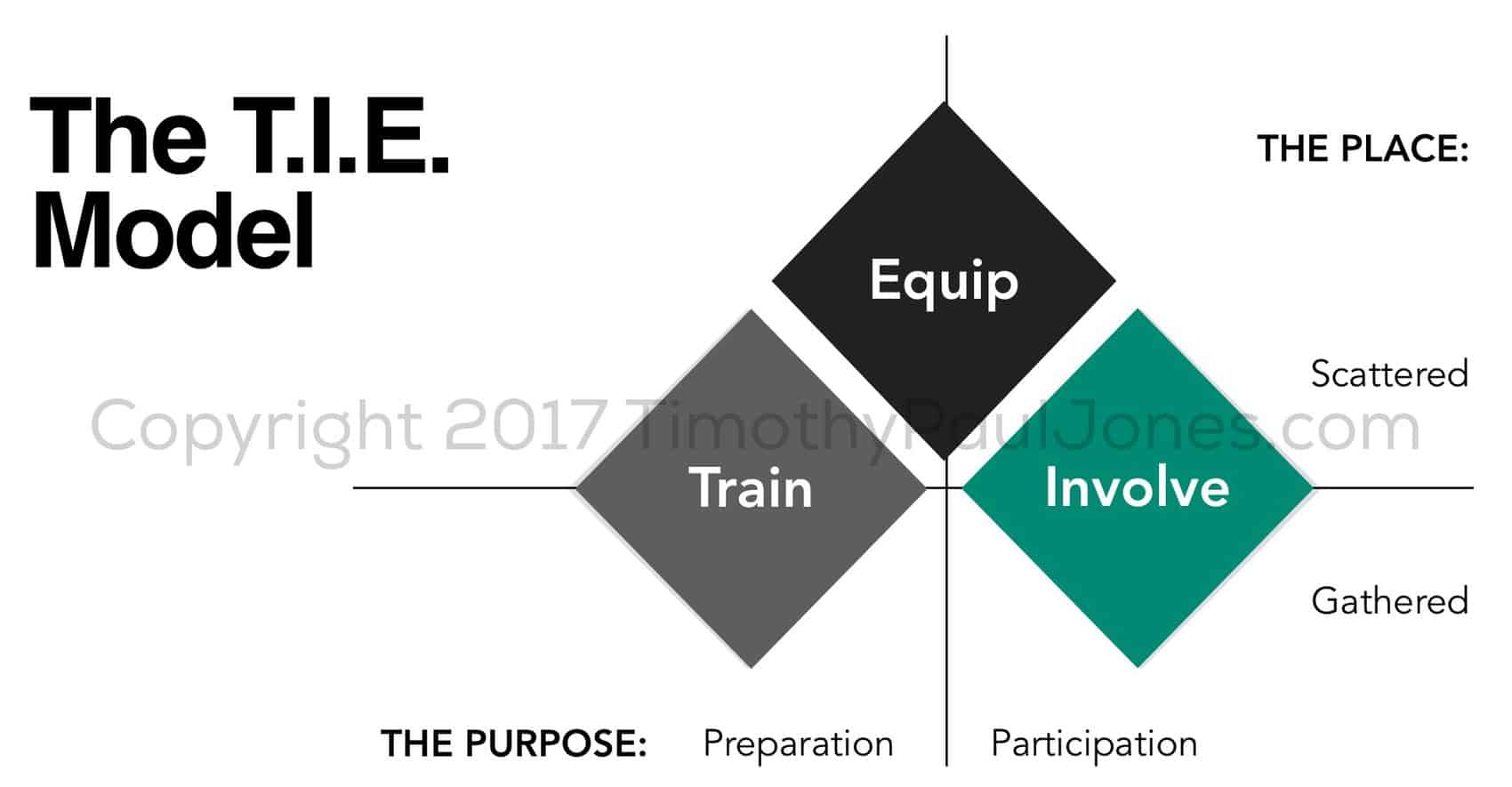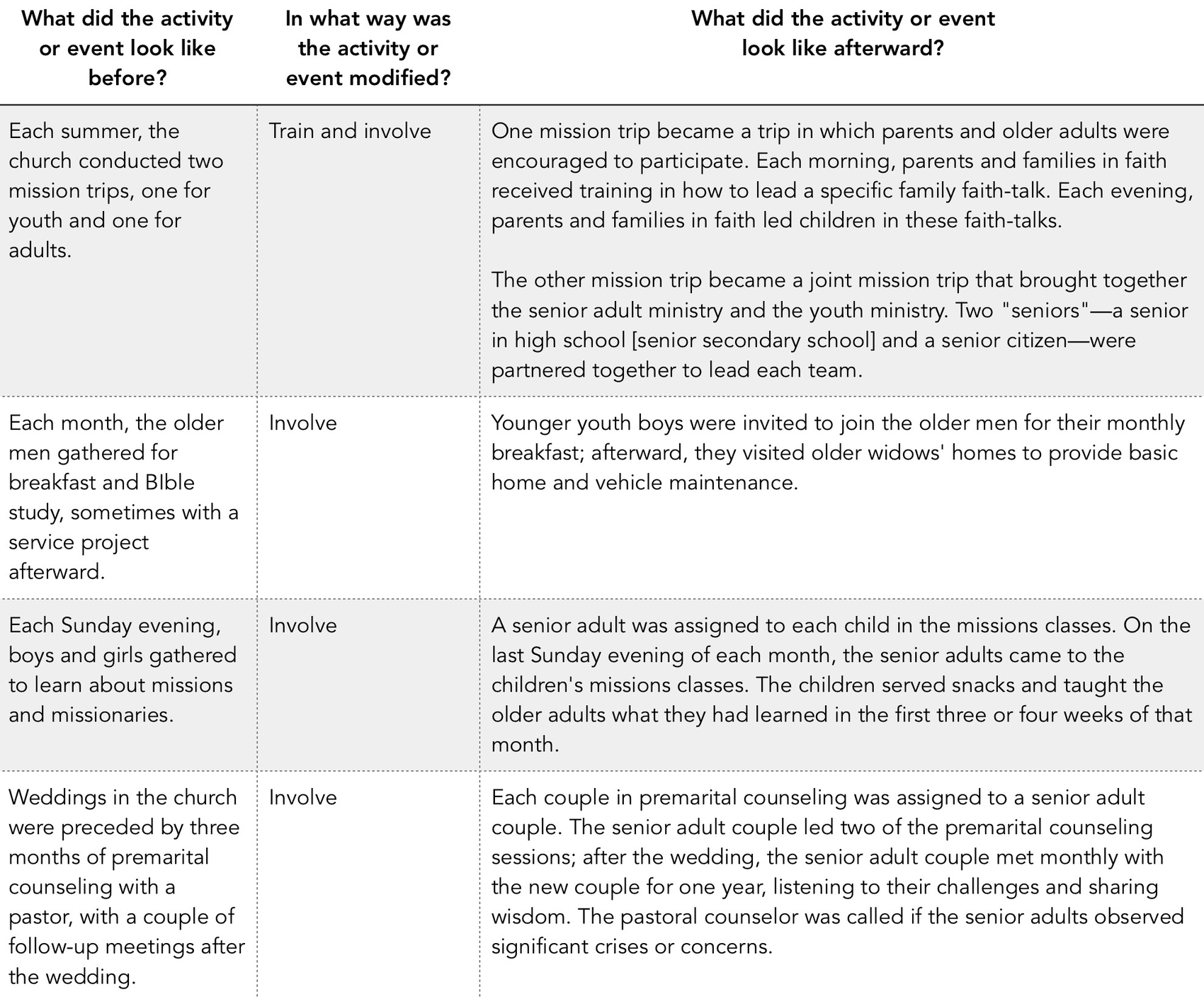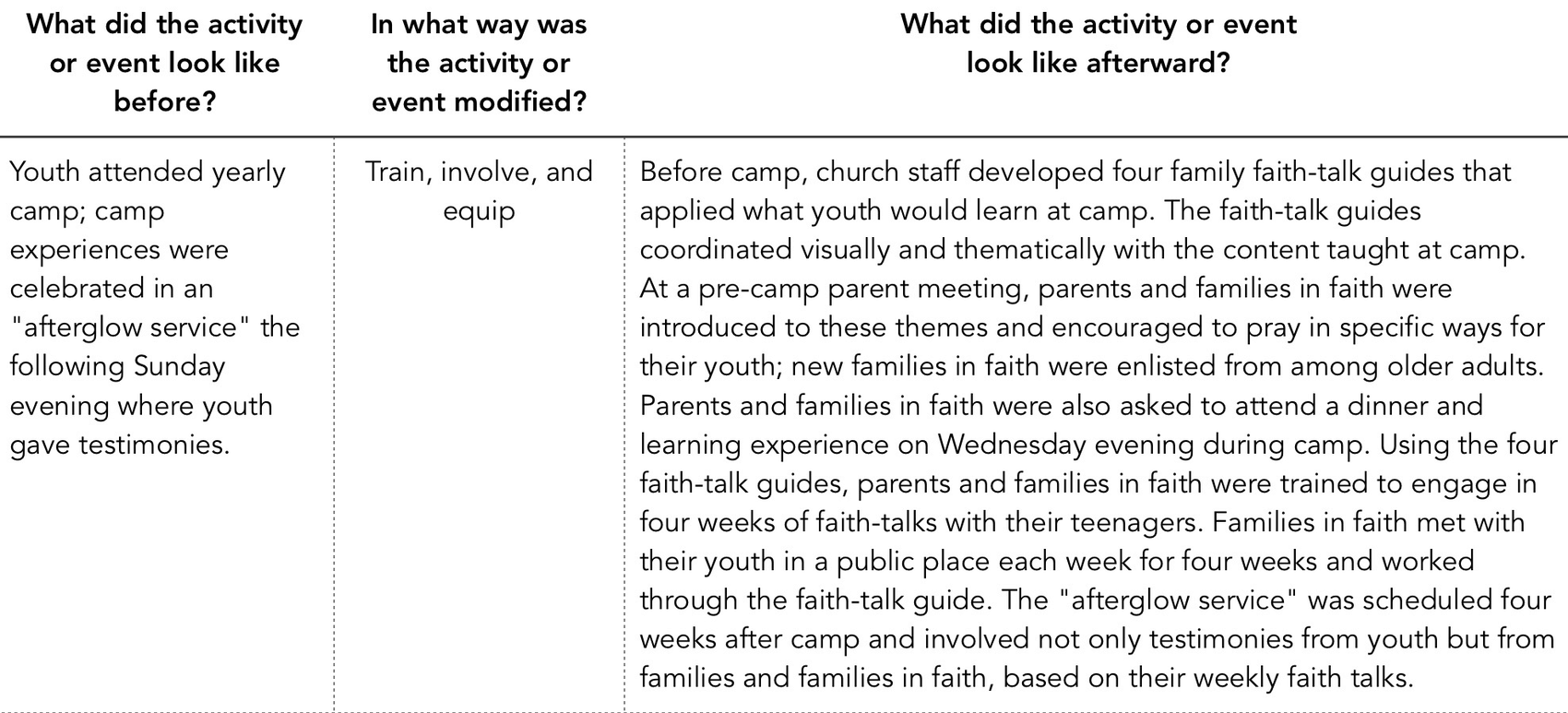This post on intergenerational diversity in the church is the second part of a two-part series. Click here for the first post in the series.

A Model for Movement toward the Discipline of Generational Diversity
If you look at your church and glimpse a lack of intergenerational ministry, it may seem at first as if the right response is to add a stack of new activities to your church’s calendar. Consider, however, that—according to recent research into the perceptions of pastoral ministers—nearly half of all ministers already feel as if they do not have sufficient time to accomplish all that their ministries demand. Furthermore, when ministry calendars become too crowded, church members can become so busy doing church that no time remains for them to be the church in their homes and communities.
With that in mind, I wish to propose an alternative possibility for the pursuit of intergenerational ministry—one that metamorphoses existing activities instead of adding additional programs. I have colloquially dubbed this alternative “the TIE Model.” In the Star Wars universe, “TIE” stands for “twin-ion engine”; that has nothing to do with this blog post, however. In this blog post, “TIE” stands for
- train,
- involve,
- equip.

The idea behind the TIE Model is, instead of adding new programs, to modify existing activities and events over time so that each activity does at least one of the following:
- Trains parents and families in faith to become disciple-makers in the lives of children and youth.
- Involves parents and older adults in activities in which they would previously not have been present, as well as involving children or youth in meaningful service alongside parents and older adults.
- Equips parents and families in faith with a resource that may assist them at some point away from church in understanding and interacting meaningfully with children or youth.
Repeated over time and extended into an increasing number of activities, this pattern of training, involving, and equipping can develop a habit and eventually a culture of intergenerational discipleship in the local church. The first step in this model is to select one activity or event to change and—at the next point at which planning for that program happens—to modify the planning process so that the program trains, involves, or equips parents and families in faith. The congregation simultaneously begins to develop families-in-faith and to assign children whose parents are unchurched to these families. One by one, the youth and children’s ministries modify activities and events to diminish the divisions between the generations.
Practical Examples from Churches

In this re-culturing process, what I have termed “families in faith” are essential. When I say “families in faith,” I am describing mature, believing couples to whom the church assigns one or more children whose parents are not involved in church. In some cases, a single believer might fill this role as well. In at least one instance, the unmarried apostle Paul became a father in faith for a young man whose mother was a believer but whose father was not (Acts 16:1-5; 1 Corinthians 4:17; 1 Timothy 1:2, 18; 2 Timothy 1:2, 5).
Each family in faith functions as an ecclesial family for particular children at church and—ideally—also initiates regular contact with these children’s parents. This occasional contact might be as simple as a monthly telephone call during which the family in faith thanks the parents for allowing their children to attend church and offers to pray with the parents about issues that the parents may be facing. The role of the family in faith is not only to function as a family for spiritual orphans but also to embody the church’s witness to unchurched parents. Although this role is not limited to older adults, it does provide an ideal point of service for senior citizens. Regardless of how your church chooses to structure families in faith, remember this: Without a clear vision for reaching children whose parents are not active in our churches, family ministry can quickly become so focused on “you and … your children” that it fails to touch the lives of “those who are far off” (Acts 2:39).
What Do You Have for Children and Youth?
The process that I have proposed is not radical or complex; it is incremental and mundane. The most difficult aspect of this model is simply continuing to follow it for the long term. I do not pretend that this model provides a quick or easy solution to the problems of generational segregation in the church. That is primarily because I do not believe any quick or easy solutions exist to this issue or any other issue in our churches or in our lives. Lasting transformation happens through tiny actions repeated over years and decades—by means of “liturgies,” in the best sense of the word—not through massive shifts that happen in moments or days.
From time to time, someone with children or youth visits the church and asks one of the leaders, “What do you have for my children?” Typically, the leader’s response is a recitation of activities that the church offers for children and youth. This isn’t necessarily wrong, and it’s probably the response that the potential attender is expecting. And yet, here’s what I prayerfully envision: I long for a church culture in which the first response to this question is a sweeping glance across the entire congregation accompanied by the words, “All of this! We have all of this for your children—older people, younger people, places to serve, words that build them when they are broken, answers when they wonder, corrections when they wander. Here in this multitude of ethnicities and ages, we have all this and more for your children. Oh, and here are some activities they might interest them as well.” Even if we don’t use these precise words as a response, this is the attitude that could flow through every aspect of our discipleship as our churches learn to practice the discipline of generational diversity.

Discuss in the Comments:
Using the examples I have provided above and below as a model, sketch three columns on a blank piece of paper. In the left column, describe how particular activities or events are presently practiced in your church. In the middle column, choose how you will metamorphose that activity or event—through training, involving, or equipping. In the right column, describe precisely how the activity or event will be practiced differently as a result of this small shift. Lastly, choose one of these activities or events to change over the next few weeks. Over time, these small shifts are likely to result in lasting transformation of your church’s culture.


